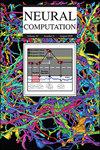KLIF: An Optimized Spiking Neuron Unit for Tuning Surrogate Gradient Function
IF 2.1
4区 计算机科学
Q3 COMPUTER SCIENCE, ARTIFICIAL INTELLIGENCE
引用次数: 0
Abstract
Spiking neural networks (SNNs) have garnered significant attention owing to their adeptness in processing temporal information, low power consumption, and enhanced biological plausibility. Despite these advantages, the development of efficient and high-performing learning algorithms for SNNs remains a formidable challenge. Techniques such as artificial neural network (ANN)-to-SNN conversion can convert ANNs to SNNs with minimal performance loss, but they necessitate prolonged simulations to approximate rate coding accurately. Conversely, the direct training of SNNs using spike-based backpropagation (BP), such as surrogate gradient approximation, is more flexible and widely adopted. Nevertheless, our research revealed that the shape of the surrogate gradient function profoundly influences the training and inference accuracy of SNNs. Importantly, we identified that the shape of the surrogate gradient function significantly affects the final training accuracy. The shape of the surrogate gradient function is typically manually selected before training and remains static throughout the training process. In this article, we introduce a novel k-based leaky integrate-and-fire (KLIF) spiking neural model. KLIF, featuring a learnable parameter, enables the dynamic adjustment of the height and width of the effective surrogate gradient near threshold during training. Our proposed model undergoes evaluation on static CIFAR-10 and CIFAR-100 data sets, as well as neuromorphic CIFAR10-DVS and DVS128-Gesture data sets. Experimental results demonstrate that KLIF outperforms the leaky Integrate-and-Fire (LIF) model across multiple data sets and network architectures. The superior performance of KLIF positions it as a viable replacement for the essential role of LIF in SNNs across diverse tasks.KLIF:用于调整代梯度函数的优化尖峰神经元单元
尖峰神经网络(SNN)因其善于处理时间信息、低功耗和更高的生物合理性而备受关注。尽管具有这些优势,为尖峰神经网络开发高效和高性能的学习算法仍然是一项艰巨的挑战。人工神经网络(ANN)到 SNN 的转换等技术能以最小的性能损失将 ANN 转换为 SNN,但这些技术需要长时间的模拟才能准确地近似速率编码。相反,使用基于尖峰的反向传播(BP)直接训练 SNN(如代梯度逼近)则更为灵活,也被广泛采用。然而,我们的研究发现,代梯度函数的形状深刻影响着 SNN 的训练和推理精度。重要的是,我们发现代梯度函数的形状会显著影响最终的训练精度。代梯度函数的形状通常在训练前人工选择,并在整个训练过程中保持不变。在这篇文章中,我们介绍了一种新颖的基于 k 的泄漏积分发射(KLIF)尖峰神经模型。KLIF 具有一个可学习的参数,能在训练过程中动态调整阈值附近有效替代梯度的高度和宽度。我们提出的模型在静态 CIFAR-10 和 CIFAR-100 数据集以及神经形态 CIFAR10-DVS 和 DVS128-Gesture 数据集上进行了评估。实验结果表明,在多个数据集和网络架构中,KLIF 的性能都优于泄漏的 "集成-发射"(LIF)模型。KLIF 的优越性能使其成为 SNN 中 LIF 在各种任务中发挥重要作用的可行替代品。
本文章由计算机程序翻译,如有差异,请以英文原文为准。
求助全文
约1分钟内获得全文
求助全文
来源期刊

Neural Computation
工程技术-计算机:人工智能
CiteScore
6.30
自引率
3.40%
发文量
83
审稿时长
3.0 months
期刊介绍:
Neural Computation is uniquely positioned at the crossroads between neuroscience and TMCS and welcomes the submission of original papers from all areas of TMCS, including: Advanced experimental design; Analysis of chemical sensor data; Connectomic reconstructions; Analysis of multielectrode and optical recordings; Genetic data for cell identity; Analysis of behavioral data; Multiscale models; Analysis of molecular mechanisms; Neuroinformatics; Analysis of brain imaging data; Neuromorphic engineering; Principles of neural coding, computation, circuit dynamics, and plasticity; Theories of brain function.
 求助内容:
求助内容: 应助结果提醒方式:
应助结果提醒方式:


